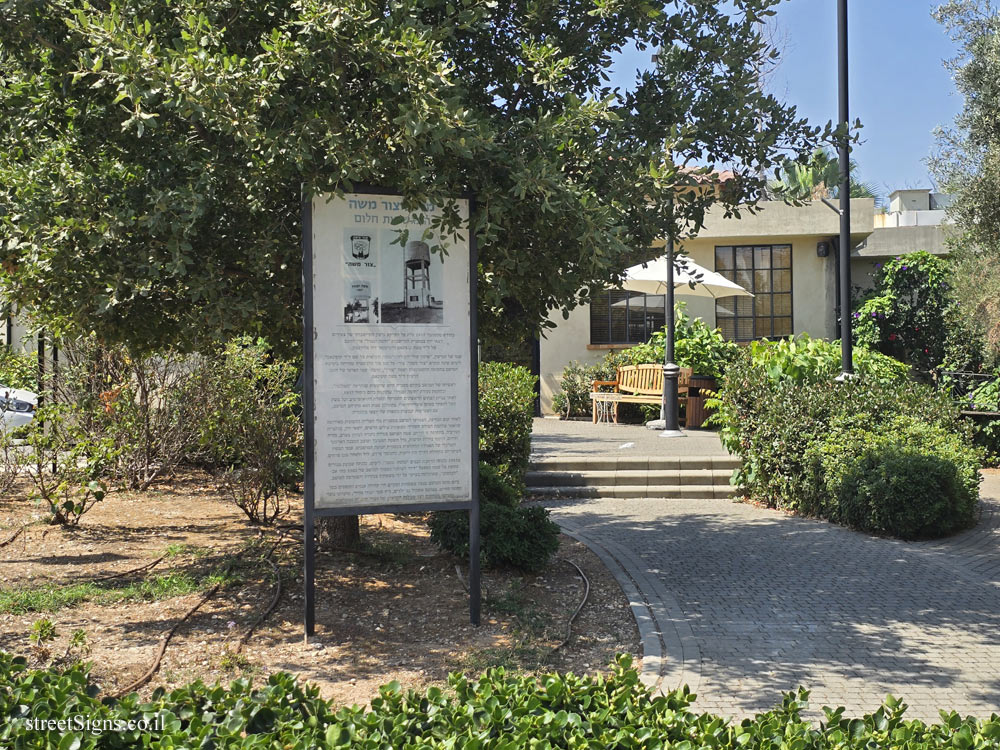The place where the sign stands was photographed that day by the same photographer
 Click for a larger image Translation of the text on the sign
Click for a larger image Translation of the text on the sign:
Moshav Tzur Moshe
A dream come true
[Photos: the water tower, the moshav symbol, Tower and Stockade 1937]
In September 1937, the nucleus of the settlement of young Greeks came to the ground as part of the settlement "Tower and Stockade" as a result of the vision of Dr. Moshe Kopinas and the journalist David Florentin.
The name of the nucleus, the "Organization of Greek Immigrants for Agricultural Settlement named after Dr. Kopinas" was later changed and was called "Tzur Moshe". Tzur - after the Hellenistic city that was near the settlement during the Hasmonean period and its name was "Zuran", and Moshe - the first name of the creator of the idea Dr. Moshe Kopinas.
The beginning of the moshav was the existence of a cooperative life framework called "The Company" (Hpluga), and the establishment of the "Tower and Stockade" point that was established on Yom Kippur 1937.
After the first houses were built, the cooperative framework was disbanded and each farm began to function individually. In the early 1940s, the seat expanded, with the addition of additional groups of expatriates from Bulgaria.
After the establishment of the state, new immigrant families from Greece, Bulgaria and Turkey joined the moshav as part of the waves of mass immigration from Europe after the Second World War. During this period, the area of the moshav was considerably expanded towards the west, east and south. New estates were established, the cultivated area increased and the organizational and economic structure of the agricultural association was shaped within the moshavim movement. The main branches of the economy at the beginning were vegetables, later an orchard, chicken coop and then flowers.
In 1995, the "Givat-Moshe" boys’ extension was built. Later, another residential neighborhood was built on the area of the "Housing for the Immigrant" project adjacent to the moshav of about 350 households - "Habustan", which was inhabited mainly by young families and joined the moshav.
Today, the settlement has about 750 families and maintains a branching and vibrant community life in all areas of life. In Moshav, a cluster of kindergartens, a regional elementary school, youth clubs and playgrounds alongside the agricultural activities of the members of the Agricultural Association

 Click for a larger image
Click for a larger image